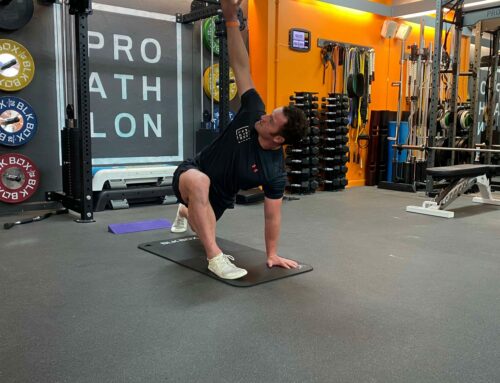Interval Training for Fat Loss:
Short on time and want to get the most bang for your buck, then interval training is a method that you should incorporate into your fitness regime.
What Is Interval Training?
Interval training involves alternating between bursts of intense exercise and periods of rest or lower-intensity activity.
Benefits of Interval Training for Fat Loss
1. The EPOC effect (more calories burned)
Interval training triggers the afterburn effect (excess post-exercise oxygen consumption or EPOC), which means your body continues to burn a higher rate of calories after you’ve finished training to bring the body back to a pre-exercise state.
2. Preserves Lean Muscle Mass
Unlike prolonged cardio, which can lead to muscle loss, interval training helps preserve lean muscle, and depending on the intensity can stimulate muscle growth by targeting type 2 muscle fibres.
3. Time-Efficient Workouts
You don’t need to spend hours in the gym. A well-structured interval workout can be completed in 20–30 minutes.
4. Improves Cardiovascular Fitness
Alternating between high and low-intensity efforts strengthens your heart and lungs, enhancing overall endurance and cardiovascular health. Interval will also improve your heart rate recovery (HRR) which measures how quickly your heart rate returns to normal after exercise, which is considered a valuable indicator or cardiovascular fitness.
What equipment do I need?
At PROATHLON We prefer to use the Watt Bike, Assault Bike and Versa-climber for interval training. All three are low skill to use, you can alter and monitor the intensity, are low impact and therefore low risk of injury. Perfect for general population use
What about running?
Yes, running intervals are great, If you are already a runner. If you are not a runner, we wouldn’t recommend running intervals at the onset. Your muscles, tendons and ligaments need to meet the demands of running, and this takes time. Build your foundation of steady state running first and look to intervals further down the line.
WORK : REST
As a general rule of thumb, the higher the intensity the shorter the interval and a longer rest period required.
Example work rest times based on intensity:
10s high intensity work / 120s recovery (1:12)
60s moderate intensity work / 120 recovery (1:2)
If you are starting interval training for the first time, we would recommend starting with moderate to low intensity intervals.
How to Implement Interval Training
Here are a few simple yet effective interval training programmes to incorporate into your routine:
- Watt Bike Intervals
8 x 1km interval @ 1:20-1:45km pace
500m recovery @ 3:00-3:30km pace
Increase by 1 interval for 5 weeks
- Versa-climber intervals
8 x 150-200ft climb
90s recovery
Increase by 2 intervals each week for 7 weeks
- Assault bike Intervals (high intensity)
5 x 6kcal as fast as possible
Rest = 10x time taken to complete interval
Increase by 1 per week for 4 weeks
Tips for Success
- Start Slow: If you’re new to interval training, ease into it to avoid injury.
- Focus on Form: Proper technique is key to preventing injuries and maximising results.
- Stay Consistent: Aim for 1-2 sessions per week along side strength training for optimal fat loss and body composition results
Conclusion
Interval training is a powerful tool for fat loss, offering maximum results in minimal time. Whether you’re a beginner or an experienced athlete, incorporating intervals into your workout can help you achieve your fitness goals faster.
Book a free consultation
Leave your details and we’ll get in touch to arrange a consultation to discuss your goals.






